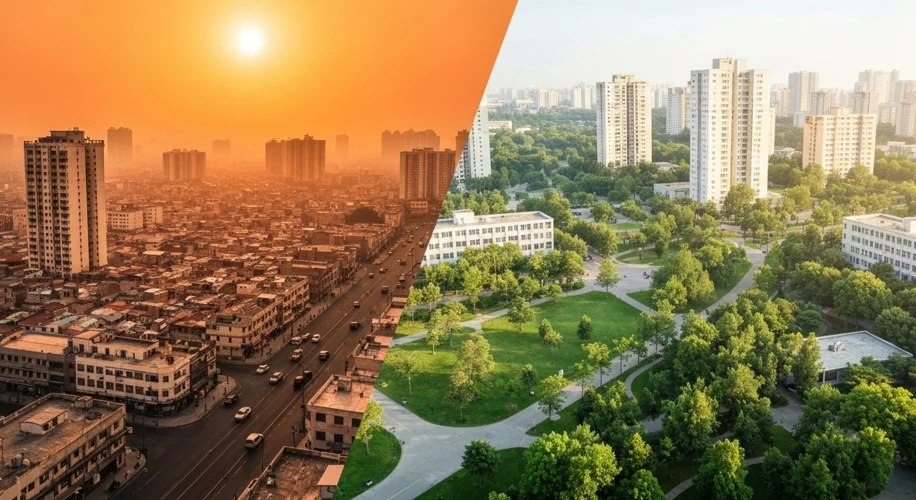Hey everyone! Simone here.
Today, August 3rd, 2025, I want to dive into something that’s impacting our daily lives, often in ways we don’t immediately recognize: the urban heat island effect. As someone who has spent years studying climate modeling and its real-world consequences, I’ve seen firsthand how our cities can become significantly hotter than the surrounding rural areas.
What Exactly is the Urban Heat Island Effect?
Did you know that cities can be several degrees Fahrenheit hotter than nearby rural areas? This isn’t just a coincidence. It’s a phenomenon called the urban heat island (UHI) effect. It happens because cities have a lot of surfaces like asphalt roads, concrete buildings, and dark rooftops. These materials absorb and store more solar radiation than natural landscapes like forests and fields. When the sun goes down, these materials release that stored heat, keeping the city warmer for longer.
Think about it: when you walk on a hot summer day, do you notice how the pavement feels like an oven? That’s the UHI effect in action. This effect isn’t just about discomfort; it has significant implications for our health, energy consumption, and overall quality of life, especially in densely populated areas.
Why This Matters to Us
This phenomenon disproportionately affects communities. Historically underserved neighborhoods often have less green space, more impervious surfaces, and older infrastructure, meaning they can experience even higher temperatures and suffer more from the health impacts of extreme heat, like heatstroke and respiratory problems. This ties directly into the environmental justice issues I’m so passionate about – ensuring that everyone, regardless of their neighborhood, has access to a healthy and safe environment.
For instance, a study might show that a low-income neighborhood with minimal tree cover is consistently 5-10°F hotter than a wealthier area with ample parks and green spaces during a heatwave. This isn’t just about feeling a bit warmer; it’s about increased energy bills for air conditioning, higher rates of heat-related illnesses, and a reduced ability for people to be outdoors and engage with their communities.
What Can We Do?
The good news is that we can actively work to mitigate the UHI effect. Here’s what we can do:
- Increase Green Spaces: Planting more trees and creating parks in urban areas is incredibly effective. Trees provide shade and release water vapor, which cools the air.
- Cool Pavements and Rooftops: Using lighter-colored, reflective materials for roads, sidewalks, and roofs can significantly reduce heat absorption.
- Green Roofs: Installing vegetation on rooftops not only cools buildings but also helps manage stormwater and improve air quality.
- Smart Urban Planning: Incorporating these strategies into city design and development from the outset can make a huge difference.
These are not just abstract scientific concepts; they are tangible solutions that can make our cities more livable, equitable, and resilient. By understanding the science behind the urban heat island effect, we can advocate for and implement changes that benefit us all, creating cooler, healthier urban environments for everyone.
I’m learning alongside you on this journey, and I believe that by working together, we can build cities that are better prepared for a changing climate.

